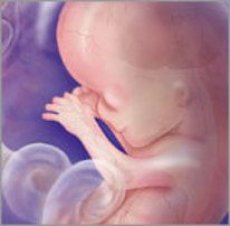Medical expert of the article
New publications
Pregnancy: 12 weeks
Last reviewed: 04.07.2025

All iLive content is medically reviewed or fact checked to ensure as much factual accuracy as possible.
We have strict sourcing guidelines and only link to reputable media sites, academic research institutions and, whenever possible, medically peer reviewed studies. Note that the numbers in parentheses ([1], [2], etc.) are clickable links to these studies.
If you feel that any of our content is inaccurate, out-of-date, or otherwise questionable, please select it and press Ctrl + Enter.

How the child grows:
This week, reflexes are developing. The baby's fingers are beginning to clench and unclench, the eye muscles are contracting, and the mouth is making its first crude movements. The intestines that were sticking out will begin to take on the familiar appearance, and the kidneys will begin to excrete urine into the bladder.
Meanwhile, nerve cells rapidly divide, synapses form, and the eyes and ears take their final locations.
Important: Each baby's development is unique. Our information is designed to give you a general idea of fetal development.
Changes in the expectant mother
The uterus has grown considerably. You can now wear maternity clothes, especially if this is not your first pregnancy. If your belly is still small, you will still notice an increase in waist size. Try not to wear tight clothes. You may develop heartburn. During pregnancy, the placenta produces a lot of the hormone progesterone, which relaxes the valve separating the esophagus from the stomach. Especially when lying down, stomach acid can enter the larynx, causing heartburn.
- Sweet pleasure
"Instead of your morning coffee, try drinking a cup of steamed milk with a drop of syrup. It tastes delicious and is good for your baby!" - Tracy.
- Amniocentesis
Amniocentesis is a prenatal test performed between 16 and 20 weeks. It provides results with 99 percent accuracy in identifying chromosomal abnormalities and Down syndrome in the baby. Amniocentesis can also detect several hundred other genetic disorders, such as cystic fibrosis, sickle cell disease, Tay-Sachs disease, and neural tube defects. Because amniocentesis is invasive and carries a minimal risk of miscarriage, this test is ordered when there is an increased risk of genetic and chromosomal problems.
Many women undergo screening first and then decide on diagnostic testing based on the initial results. Other women choose diagnostic testing right away if they know they have an increased risk of chromosomal abnormalities. Some women choose not to have these tests at all.
- How is the amniocentesis procedure performed?
The procedure takes about 30 minutes. Using ultrasound, the doctor pinpoints the amniotic fluid cavity at a safe distance from both the baby and the placenta, and uses a long, thin, hollow needle to extract a sample of amniotic fluid. You may feel some discomfort.
This week's activity: Make a budget for your baby. Agree with your partner on all possible expenses for the baby - clothes, food, diapers and toys. Such planning will help you avoid critical moments and prepare for additional expenses.

